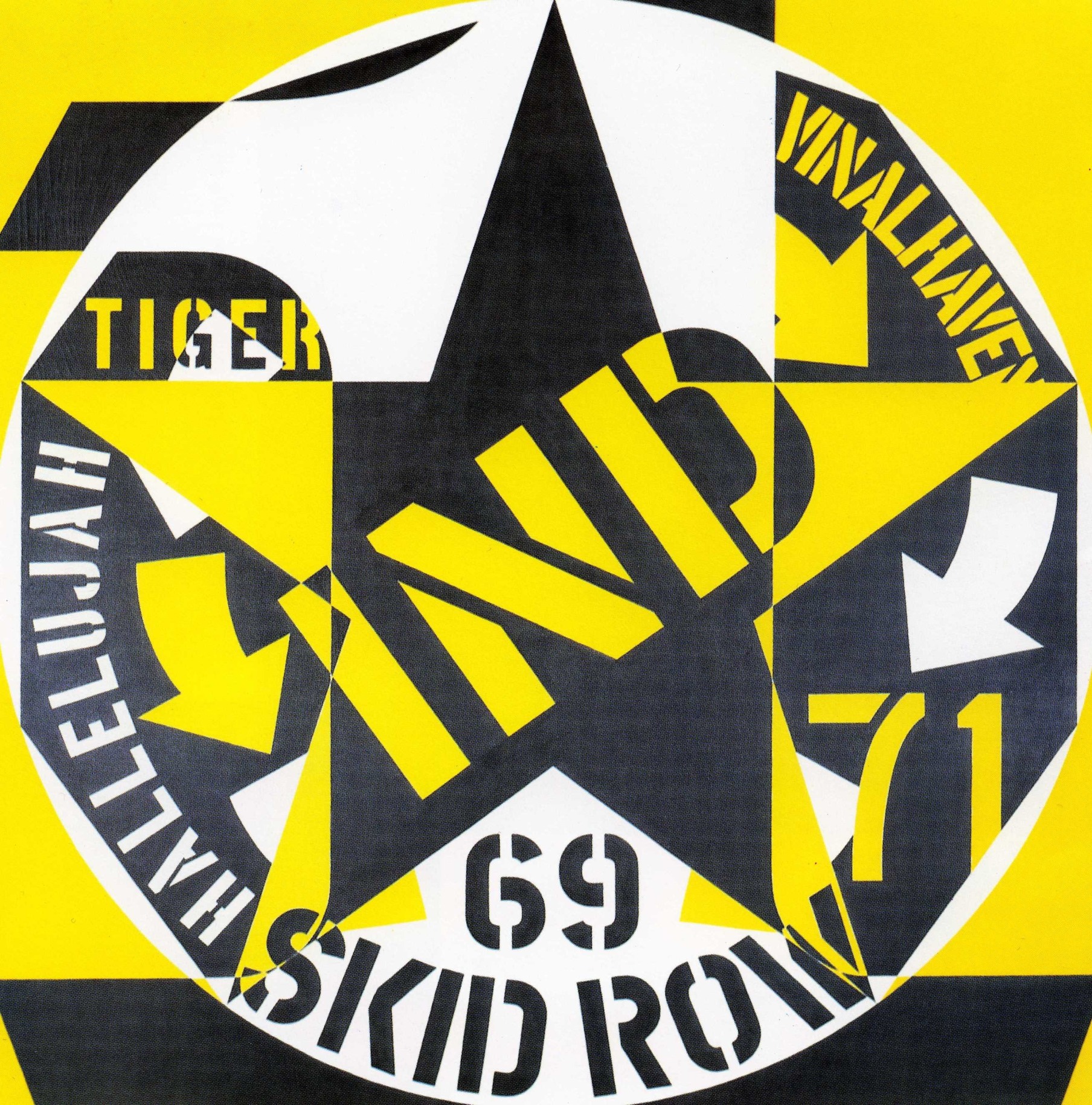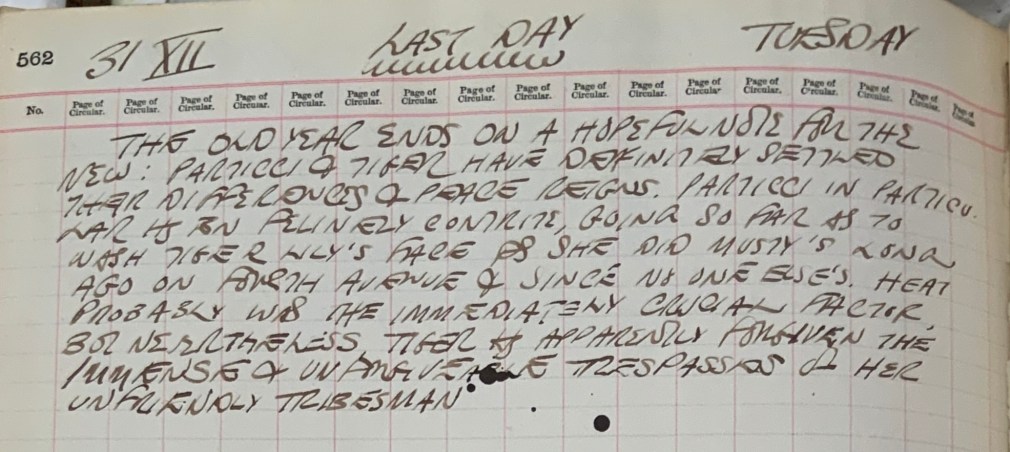Robert Indiana’s Decade: Autoportrait paintings are a series of autobiographical portraits that he began in 1971. The works, which the artist considered a throwback to his American Dream series, consist of three groups of ten paintings in different sizes: 24-, 48-, and 72-inches. The 24- and 48-inch works made their debut in Robert Indiana: New Paintings and Sculpture, held at the Galerie Denise René, New York, November 22–December 30, 1972.
The series provides a portrait of his life in the 1960s, and includes references to important names, places, and events. Decade: Autoportrait 1969 contains two references to places where Indiana lived: "Skid Row" refers to the Bowery, where Indiana's studio was located (at the corner of Spring Street), and "Vinalhaven" refers to the island in Maine which Indiana visited and worked in for the first time that year. He would move there permanently in 1978.
"Hallelujah" refers to a painting from that year, Hallelujah (Jesus Saves) (he also painted a variation on the work titled Halleluiah).
Most of the canvases in the 48-inch series include, in the upper left corner, the name of someone important in Indiana's life: "St. John" from Decade: Autoportrait 1961 is a reference to Indiana's partner at the time, John Kloss, and "Virgil," from Decade: Autoportrait 1966 is a reference to the composer Virgil Thomson, a good friend of Indiana's. Here "Tiger" refers not to a person, but to one of Indiana's favorite cats.
A color lithograph based on this painting was published in 1973, in an edition of 125.


